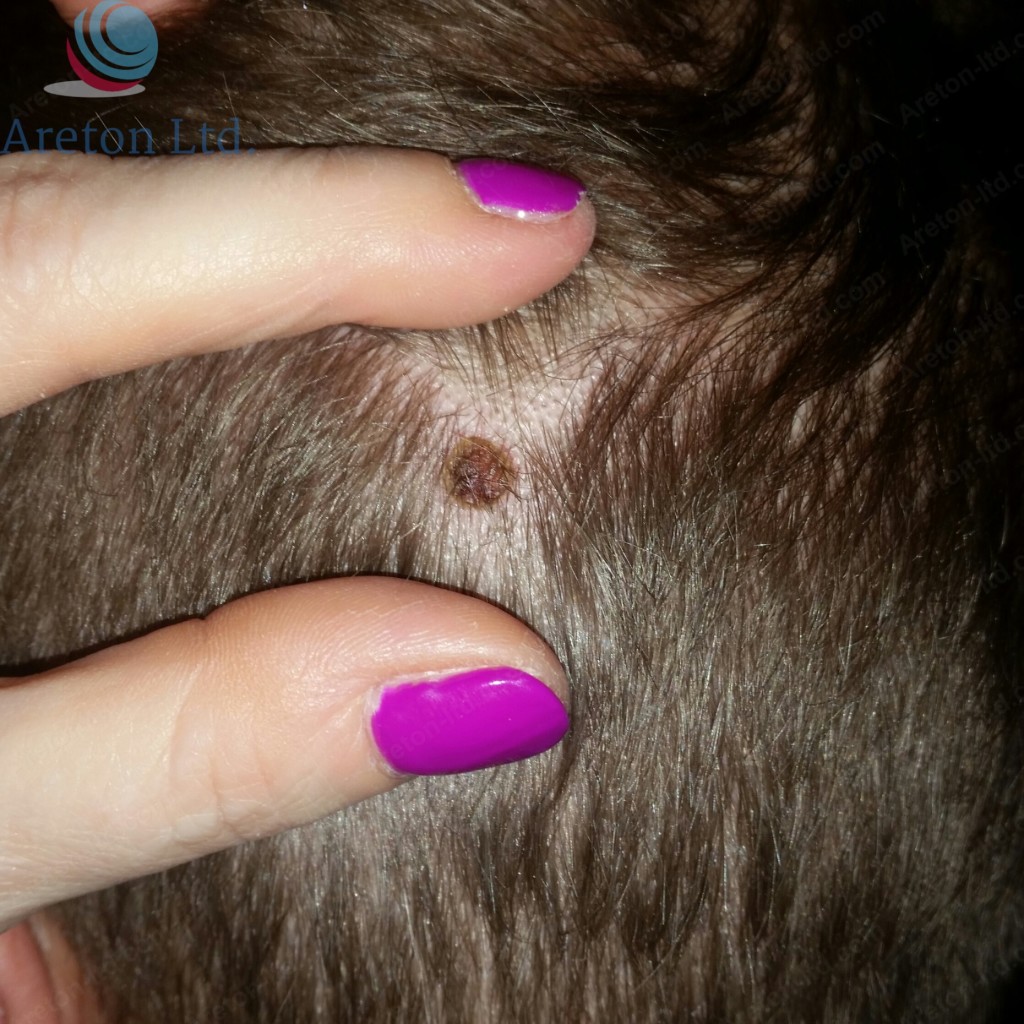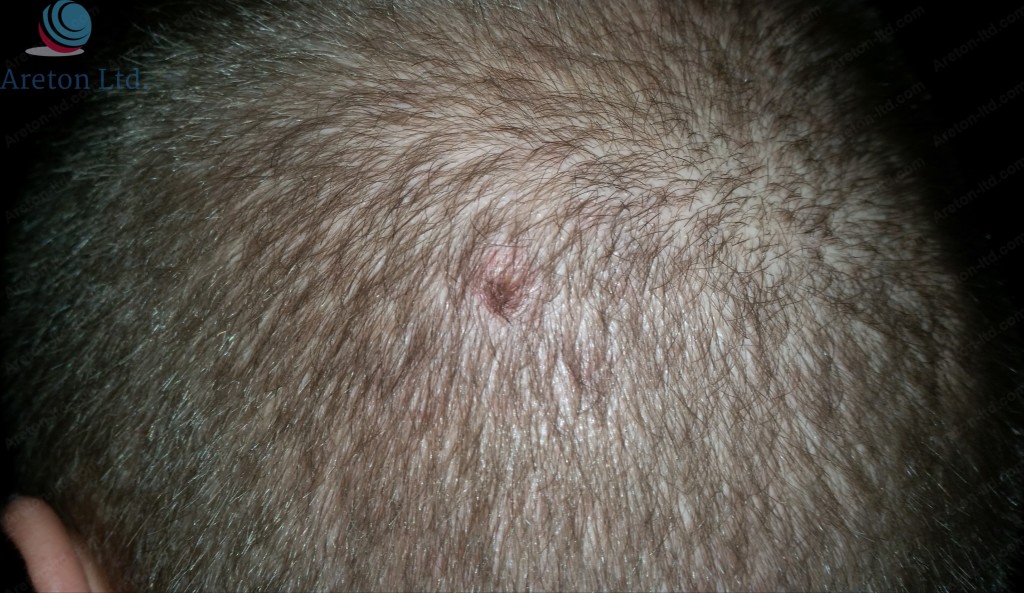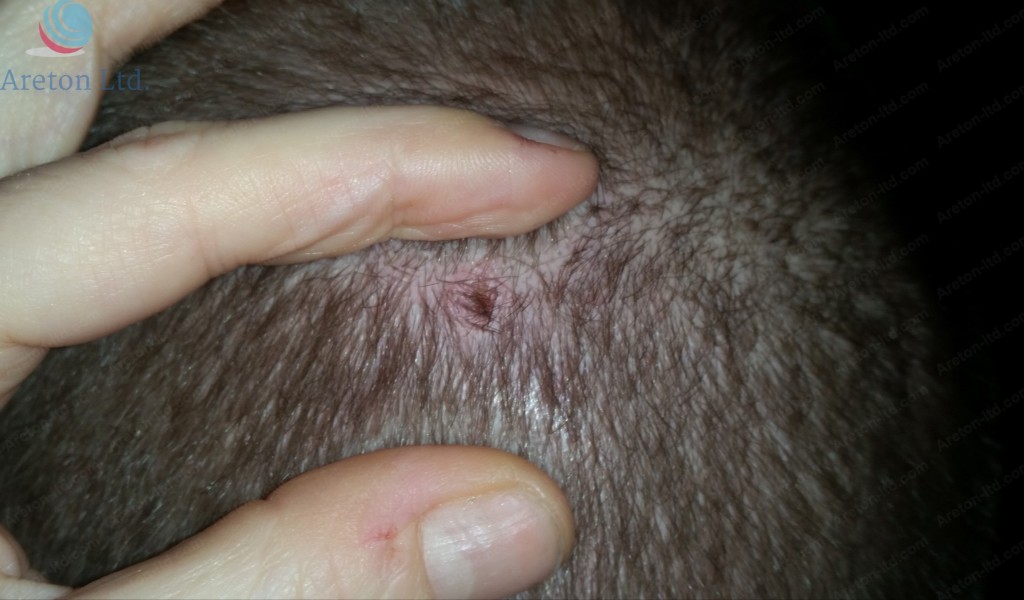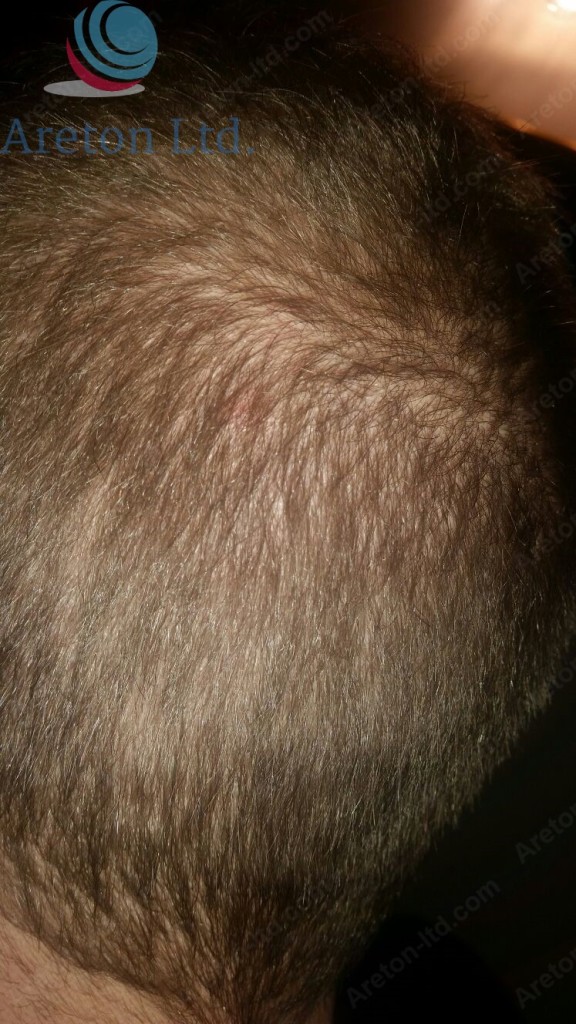[:en]
Mole Removal on the Scalp Using Plasma.
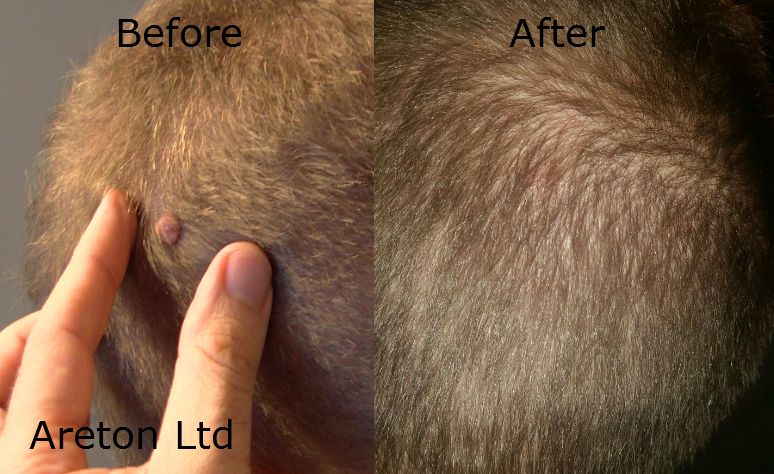
The subject was under 20 years of age at the time of the treatment. The skin growth was previously diagnosed as benign, therefore no medical intervention was required. Also, the lesion was neither itchy nor inflamed, therefore it could have been safely removed for aesthetic reasons. It was reported that the benign growth was only bothering the individual when combing his hair.
→ Topical numbing product applied for 1 hour using occlusion.
→ The aesthetic practitioner objective was to flatten the benign growth against the scalp.
→ Using Plasma there was no need to shave the area.
The device used was the BeautyTeck set at high power level using the spray operation in order to ablate the mole quickly.
Watch the video of the full procedure.
For further information and details about this case study please continue reading.
There was no need to shave the area in order to carry out the treatment. The device was set immediately at high power to remove the main bulk of the mole quickly. The objective of the aesthetic practitioner was to level off the benign growth as well as possible with the surrounding scalp in order to achieve the best possible aesthetic results. Every now and then, the carbon residues were removed by rubbing the area with a cotton pad impregnated with non-flammable antiseptic. Towards the end of the procedure after removing the carbon residues, the practitioner ran his finger a number of times on the mole to appreciate how much of the lesion had to be still carbonized in order to flatten the area properly.
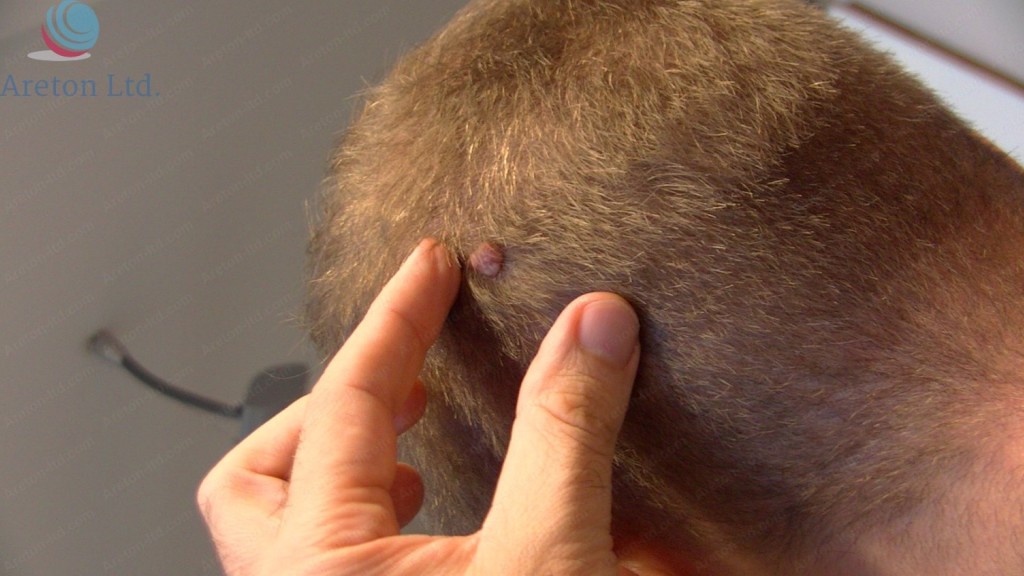
The benign skin growth has no hair growth. Once removed the area is expected to experience hair regrowth.
Once the area looked almost flat then the finishing touches were made to flatten the mole as precisely as possible and therefore achieve the best possible aesthetic results. In any case, try not to go too deep and create a void in the skin as this, in turn, can result in a hypertrophic or atrophic scar. As a rule of thumb it is preferable to leave the area slightly elevated then cause a void in the scalp (or skin), as the elevation can be removed in a further treatment, while the void is more likely to result in type of scarring which can be challenging to treat especially if atrophic (depressed).
As seen in the before picture, there was no hair growth on the benign mole itself. After healing, the area experienced hair regrowth where the mole was located. Hair regrowth may not occur after surgical excision or surgical removal, due to the depth of the incision made during certain surgical procedures.
The area did not bleed throughout the entire procedure. As we know most other alternative surgical procedures involving the use of conventional scalpels will lead to bleeding. In this case, one of the advantages of the treatment is the bloodless type of procedure, which is often also appreciated by those undergoing the procedures.
The removal was carried out without the use of an injectable anesthetic. Generally, injections are not required for benign mole removal using electrical arcing. The topical numbing product contained over 10% lidocaine. This topical anesthetic was applied using occlusion for one hour to become effective. This was sufficient to carry out the procedure in complete comfort for the subject. Several medical practitioners prefer to inject the area with a local anesthetic before carrying out the procedure because local anesthetics become effective very quickly.
Most topical "over the counter" numbing products available have a relatively low percentage of active ingredients, therefore they require in the region of 45 minutes to 1 hour (using occlusion) in order to numb the area effectively. However, in case the wait time is a matter of concern, medical practitioners can order custom-made topical numbing products which are effective without occlusion and numb the area within 5 to 10 minutes from the application of the product. Because of this, even in the case, a fast numbing action be preferred, the use of injectable anesthetics are not generally necessary in these types of aesthetic procedures.
During the first few days, a mild antiseptic was applied twice a day until the area scabbed. The after-care consisted in keeping the area not exposed to sources of infections. The subject used normal neutral shampoo as usual (once a day).
[:es]
Eliminación de lunar en el cuero cabelludo usando plasma.

El sujeto tenía menos de 20 años de edad en el momento del tratamiento. El crecimiento de la piel se diagnosticó previamente como benigno, por lo que no se requirió intervención médica. Además, la lesión no causó picazón ni inflamación, por lo que podría haberse eliminado de forma segura por razones estéticas. Se informó que el crecimiento benigno solo molestaba al individuo cuando se peinaba el cabello.
→ Producto adormecedor tópico aplicado durante 1 hora mediante oclusión.
→ El objetivo del practicante estético era aplanar el crecimiento benigno contra el cuero cabelludo.
→ Usando Plasma no había necesidad de rasurar el área.
El dispositivo utilizado fue BeautyTeck alto nivel de potencia utilizando la operación del barrido (spray) para quemar el lunar rápidamente.
Vea el vídeo del procedimiento completo..
Para más información y detalles sobre este estudio, por favor continúe leyendo.
No hubo necesidad de rasurar el área para llevar a cabo el tratamiento. El dispositivo se configuró de inmediato a alta potencia para eliminar rápidamente el grueso principal del lunar. El objetivo del profesional de la estética era nivelar el crecimiento benigno lo mejor posible con el cuero cabelludo circundante para lograr los mejores resultados estéticos posibles. De vez en cuando, los residuos de carbono se eliminaban frotando el área con una almohadilla de algodón impregnada con un antiséptico no inflamable. Hacia el final del procedimiento, después de eliminar los residuos de carbono, el profesional pasó el dedo varias veces por el lunar para apreciar la cantidad de la lesión que aún tenía que ser carbonizada para aplanar el área correctamente.

El crecimiento benigno de la piel no tiene crecimiento de vello. Una vez retirado el área se espera que experimente un nuevo crecimiento del cabello.
Una vez que el área se veía casi plana, se hicieron los toques finales para aplanar el lunar con la mayor precisión posible y, por lo tanto, lograr los mejores resultados estéticos posibles. En cualquier caso, trate de no ir demasiado profundo y crear un vacío en la piel, ya que esto, a su vez, puede resultar en una cicatriz hipertrófica o atrófica. Como regla general, es preferible dejar el área levemente elevada para luego causar un vacío en el cuero cabelludo (o piel), ya que la elevación puede eliminarse en un tratamiento adicional, mientras que el vacío es más probable que resulte en un tipo de cicatriz que El tratamiento puede ser desafiante, especialmente si es atrófico (deprimido).
Como se vio en la imagen anterior, no había crecimiento de vello en el lunar benigno. Después de la curación, el área experimentó un nuevo crecimiento del cabello donde se localizaba el lunar. El recrecimiento del cabello puede no ocurrir después de la escisión quirúrgica o la extirpación quirúrgica, debido a la profundidad de la incisión realizada durante ciertos procedimientos quirúrgicos.
El área no sangró durante todo el procedimiento. Como sabemos, la mayoría de los procedimientos quirúrgicos alternativos que implican el uso de bisturís convencionales provocarán sangrado. En este caso, una de las ventajas del tratamiento es el tipo de procedimiento sin derramamiento de sangre, que a menudo también es apreciado por quienes se someten a los procedimientos.
La extracción se llevó a cabo sin el uso de un anestésico inyectable. En general, no se requieren inyecciones para la eliminación de lunares benignos usando arcos eléctricos. El producto adormecedor tópico contenía más del 10% de lidocaína. Este anestésico tópico se aplicó mediante oclusión durante una hora para que fuera efectivo. Esto fue suficiente para llevar a cabo el procedimiento con total comodidad para el sujeto. Varios médicos prefieren inyectar el área con un anestésico local antes de realizar el procedimiento porque los anestésicos locales se vuelven efectivos muy rápidamente.
La mayoría de los productos adormecidos "de venta libre" tópicos tienen un porcentaje relativamente bajo de ingredientes activos, por lo que requieren de 45 minutos a 1 hora (con oclusión) para adormecer el área de manera efectiva. Sin embargo, en caso de que el tiempo de espera sea motivo de preocupación, los médicos pueden ordenar productos adormecidos tópicos a medida que sean efectivos sin oclusión y adormecer el área dentro de los 5 a 10 minutos de la aplicación del producto. Debido a esto, incluso en el caso, se prefiere una acción rápida de adormecimiento, el uso de anestésicos inyectables no es generalmente necesario en este tipo de procedimientos estéticos.
Durante los primeros días, se aplicó un antiséptico suave dos veces al día hasta que el área quedó cicatrizada. El cuidado posterior consistió en mantener el área no expuesta a fuentes de infecciones. El sujeto usó champú neutro normal como de costumbre (una vez al día).
[:]

